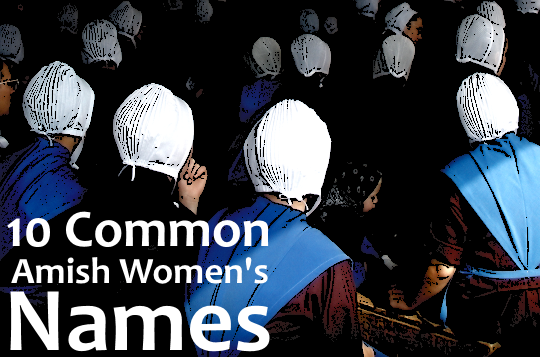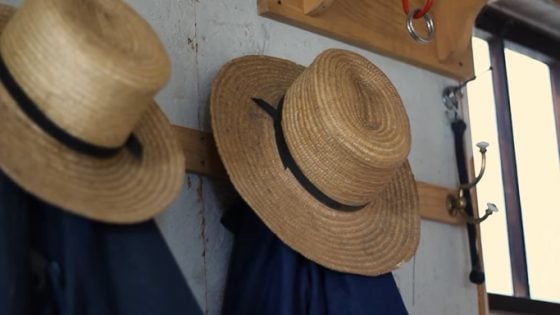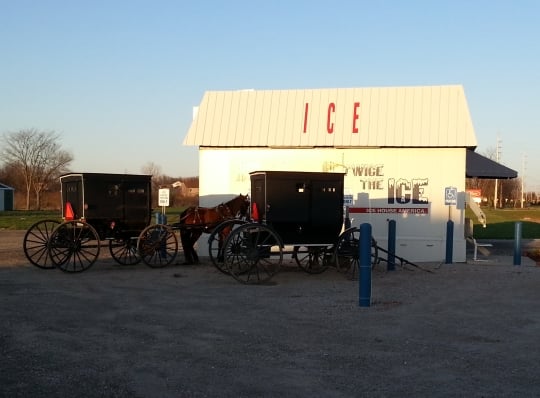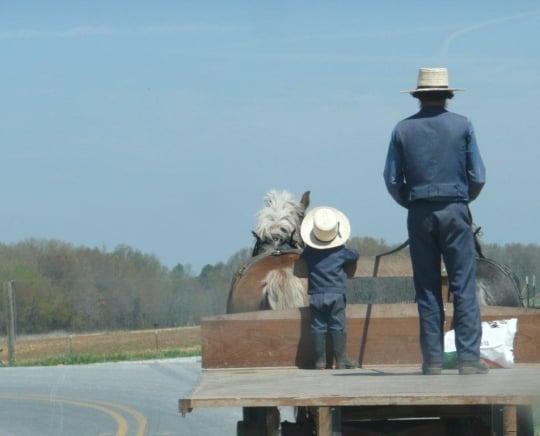Kokomo, Indiana Amish
The Amish settlement at Kokomo, Indiana, founded 1848, is the third-oldest in Indiana. Yet despite having been in existence for over 160 years, Kokomo remains a tiny settlement of just 2 church districts.
Meanwhile, other settlements founded in the state at roughly the same time have grown and thrived. The Nappanee and Adams County settlements approach 40 and 50 church districts respectively, while the Elkhart-Lagrange settlement, founded just 7 years before Kokomo, today numbers over 130. Why is Kokomo, unlike its neighbors, a small size today?
Kokomo is a settlement which has been affected by schism and progressivism to a significant degree. A break in the 1850s which resulted in the conservative ‘Old Order’ element and the more progressive ‘Amish Mennonite’ element affected Amish communities across the nation, including Kokomo. Afterwards, the conservative ‘Old Order’ faction at Kokomo prospered for a time, before beginning to decline to an 1892 low of six families and 17 members.
Later, ranks increased as families began moving in from other communities, and particularly from the Arthur, Illinois settlement, which resulted in the formation of 2 church districts in 1908. The peak of the Kokomo community likely occurred in the mid-1930s.
After this period, according to the history recorded in the Nappanee Amish directory, “a serious decline took place.” Old Order Amish joined Beachy Amish and Mennonite groups and also moved to other Midwestern Amish communities. Over the first half of the 20th century, nearly 500 church members in the Kokomo settlement either affiliated with higher churches, moved out, or simply left the church altogether.
Today, the Kokomo settlement is uncommon among Amish communities in that it permits the use of tractors in the field. According to Meyers and Nolt’s An Amish Patchwork, Kokomo Amish marry at a slightly older age than other settlements in the state (age 23 for men and 22 for women), and have slightly fewer children on average, at 6 per family.
As in many other Amish settlements, small businesses and the carpentry trade have become more common in this community as farming has declined. Unlike in the Elkhart-Lagrange settlement, Kokomo Amish do not seek employment in local factories. This, as Kraybill and Nolt explain in Amish Enterprise, is due to the unionized nature of local factories as well as a high school diploma requirement.
Amish and unions
For that matter, Amish in general are against union membership, and those who join unions face excommunication. Unions are looked upon unfavorably by Amish for a number of reasons. One reason is that Amish feel that the means unions employ to achieve their aims, such as work strikes, qualify as use of force, and thus clash with the tenet of nonresistance adhered to universally by Amish.
Other Indiana Amish posts:
Indiana Amish State guide
Sources: Nappanee Amish Directory 2001; An Amish Patchwork: Indiana's Old Orders in the Modern World; Amish Enterprise: From Plows to Profits






It’s so nice to see Kokomo’s Amish community finally mentioned here.
Kokomo Indiana Amish
Interesting, thanks for the info and insight as to the Kokomo Amish church history in Howard county. In Miami County in Indiana, I have seen Amish near Amboy, Indiana. I’m curious about my neighbors.
There are so many people who are very interested in the Amish and the ways of their life and heritage that was handed down by their parents; like myself.
I agree, Reid. I grew up in the Howard-Miami Mennonite Church, and I read this post with considerable interest. I have a copy of the History of Howard-Miami Mennonite Church, which was issued in 1948 on the 150th anniversary of the church’s founding. It includes a detailed history of the church and many of its early (and later) leading members. I’d forgotten how fascinating it was, and I’m going to blog about it on my Northkill blog as soon as I get a chance.
Thanks so much for this article! I really enjoy this blog!
If I recall correctly from discussions with Old Order Amish in Milroy, the Milroy community in Rush county are descendants from the community in Howard County. The Milroy community would also be considered “progressive” in comparison with other Old Order Amish in the state, due to their allowance for various modern conveniences and technologies. Its not uncommon to see bobcat machinery used on the farms there. There is also a family that is reported to have electric in their home because of the medical condition of one of their children.
-Matthew
if and Amish family needs electricity for medical reasons, there is nothing wrong with that. Amish are just like the English, we are all humans and we are all children of God.